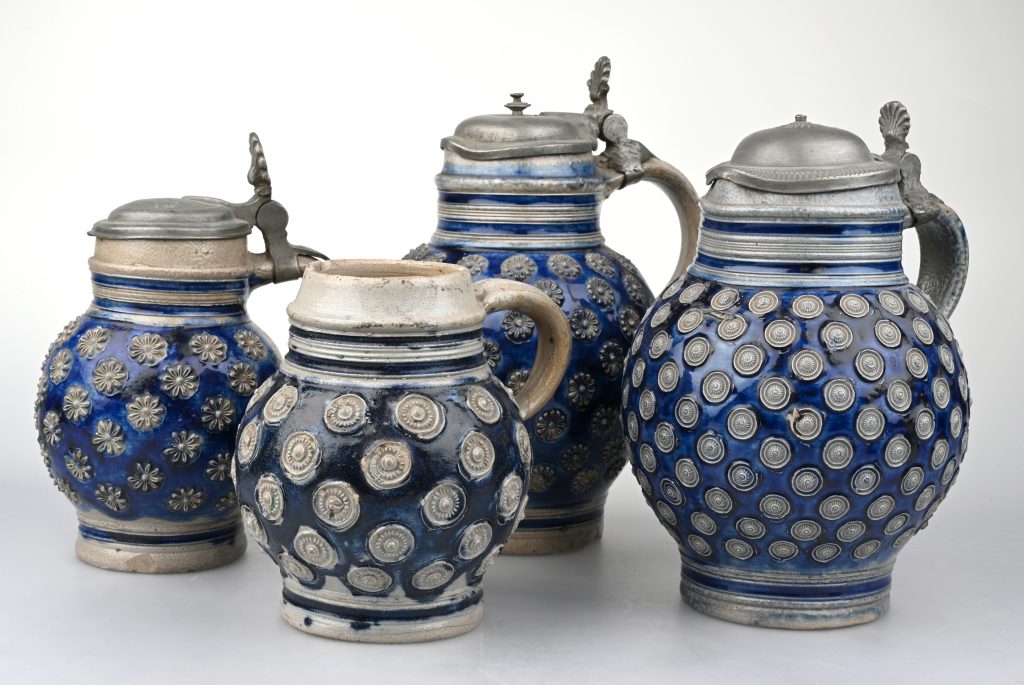
Stoneware is a special type of pottery, fired usually at temperatures between 1200°C and 1400°C with a largely vitreous, opaque, coloured fabric that is impervious to light. It has a limited number of open pores and there are usually no tempering agents or at least none that are visible. Early stonewares were often decorated using iron red slips or ash-glazes. From the 15th century onwards, stonewares were increasingly covered in salt-glazes. Painted decorations using fire-resistant cobalt (smalt, blue) or iron manganese compounds (manganese violet) were not used in central Europe until the 16th and 17th centuries.
Completely vitrified stoneware was first developed around 1300 in Siegburg near Bonn in Germany. Over the course of the subsequent centuries, various central European pottery and stoneware centres sprang up in regions where high-quality clays were available. Particularly worth mentioning among these are the Saxon centres of production (e.g. Waldenburg, Bad Muskau/Triebel and Dippoldiswalde) and the Rhenish areas of Siegburg, Cologne, Frechen, Langerwehe and Aachen; Raeren and Bouffioulx in Belgium, and from the late 16th century, the Westerwald region and the stoneware centres in the Alsace (e.g. Oberbetschdorf and Zabern); their later affiliates in Baden-Württemberg and France and the production in northern France (Pays de Bray, Beauvaix). Potters emigrating to England and the US eventually introduced German stoneware technology to those regions. In England, the development and production of local white salt-glazed stoneware is dated to between 1700 and 1780.
For ceramics of the 19th and 20th centuries it is often difficult to distinguish with the naked eye between genuine stoneware and high-fired wares from industrial production (so-called “industrial fine stoneware” like basalt ware, jasper ware, cane ware, industrial redware etc.), as there was a considerable technological overlap between the two types of pottery.
Due to the lack of certain types of clay during the Middle Ages and considerable periods of the modern era, there was no stoneware production in Switzerland, Austria and Liechtenstein or in large parts of southern Germany. Any stoneware found in these regions can therefore be classed as imports.
Ger.: Steinzeug
Fr.: Grés

